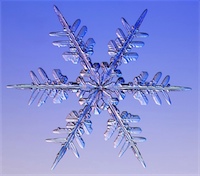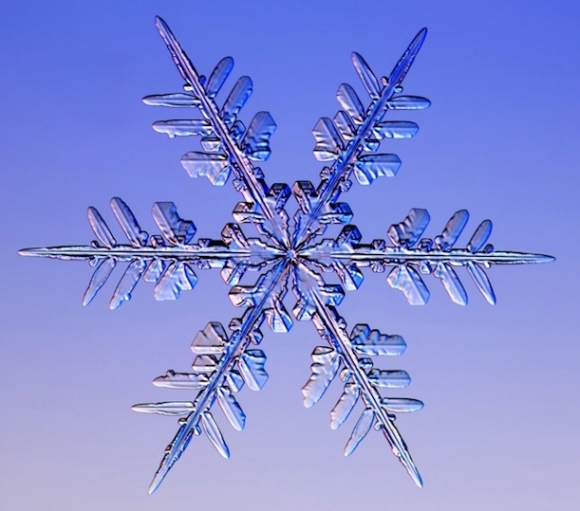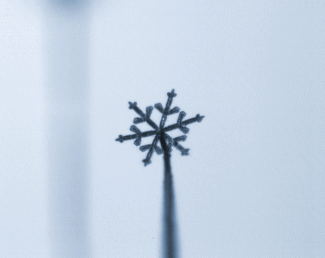How a scientist builds (and photographs) snowflakes in a lab
posted Thursday, December 12, 2013 at 2:42 PM EST

Those astonishing macro images of snowflakes from last month took our breaths away, and reminded us that there's a lot you can do with some pretty basic gear. But have you ever wanted to know a bit more about how snowflakes form, and how to better photograph them? It turns out there's one man who's an expert in both: Professor Kenneth Libbrecht of Caltech.
In an interview with Smithsonian Magazine, Libbrecht talks about how he gained an interest in the formation of snowflakes — and after realizing that so many of the existing illustrations came short, turned to taking pictures of them, too. It turns out that even the smallest alteration in a variable can lead to an incredibly different snowflake — all it takes is a tiny adjustment in temperature, humidity, or a number of other factors to get a completely different looking crystal.
In order to recreate the crystals in a lab, Libbrecht uses a special cold chamber, and has developed his own method for growing them over the course of around 45 minutes. The interview describes his technique as:
Libbrecht’s process, developed over the past few years, is done in a cold chamber and takes about 45 minutes in total. He starts with a completely clean piece of glass, and scatters many microscopic ice crystals onto it. With a microscope, he isolates a particular crystal, then blows slightly warmer humid air onto the glass. The water vapor condenses on the seed crystal, just like in a real cloud, eventually forming a visible snowflake.
His website is an incredible resource for people interested in snowflakes. He has galleries of his own photography, details how he grows them, movies of the growth process, discussions of the physics behind them, and even sells books of his work.
But for a photographer, by far the most interesting section is his discussion of his photography methods, and how to do it yourself. It's not a cheap setup, involving a complex array of lens tubes in order to get the sufficient magnification for microphotography, as well as a robust mounting system to shoot them on. While those snowflake macros from last month show that you actually don't need a pricey rig, Libbrecht's writing on how to shoot the flakes is also invaluable. He delves into how to keep your camera warm, how to handle the snowflakes themselves, how to light them to get the impression of depth. For anyone interested in snowflake microphotography, it's an excellent introduction.
So if the swirling ice crystals of winter have made you want to learn how to photograph snow, this is your chance to learn how!


(via LaughingSquid)